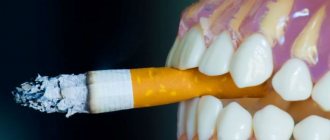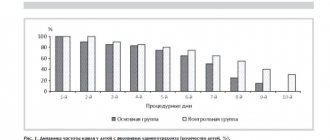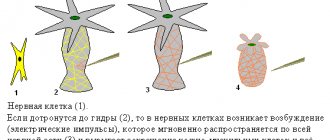Where does bad breath come from after quitting smoking?
Bad breath, or, in other words, halitosis, in the case of people who have given up smoking, appears due to dysbiosis of the oral cavity. After an abrupt cessation of the intake of nicotine, hydrocyanic acid and tars, a restructuring of all metabolic processes occurs, including changes in the functioning of the gastrointestinal tract, and the oral cavity, intestines and respiratory tract begin to be populated by beneficial bacteria, while harmful microflora die. This process lasts no more than a few weeks and, with the right lifestyle, goes away without a trace.
Considering that smoking and healthy teeth are not compatible, it is not difficult to understand that an unpleasant odor can also be an alarming signal that requires a visit to the dentist. By settling on the surface of the teeth, tobacco tar destroys the enamel, causing caries and periodontal disease, the manifestation of which, in fact, is halitosis.
An unpleasant odor is also emitted by sputum secreted from the lungs and bronchi, which will create discomfort until the respiratory tract is completely cleared. And finally, in those who quit smoking, bad breath is explained by increased consumption of sweets as an alternative to cigarettes, which causes active breakdown of protein in the oral cavity.
I quit, I don’t smoke!
You quit smoking, congratulations!
Here you will find out what happens in the body of a man or woman after quitting smoking by hour, day, month and year. We will also talk about all the changes in the body after a person quits smoking, about the cleansing and restoration of organs during all these time periods.
Withdrawal syndrome and causes of addiction
A person who has given up the harmful habit of smoking often encounters difficulties in the first days of giving up, holding on to nerves and constant mood swings for one or two days, after which he stops his endeavors.
The reason is mainly due to nicotine, which has long been a substitute for the brain's main inhibitory neurotransmitter, acetylcholine. It, in turn, performs a normalization function in the central nervous system.
If you are stressed at work or in a nervous situation, the production of acetylcholine (AC) increases and stress levels decrease. On the contrary, an overly active state of the central nervous system is an abnormal phenomenon, so AC inhibits brain activity, bringing it back to normal.
All this time - until the day of quitting smoking - the function of normalizing brain activity was performed by nicotine through cigarettes or alternative means, such as nicotine gum, sprays, patches, etc.
After quitting cigarettes, the central nervous system no longer receives the grafted normalizer nicotine, but at the same time, the natural neurotransmitter acetylcholine is no longer produced in the required quantity, and the person begins to experience abstinence syndrome, or withdrawal syndrome, which is accompanied by the processes of cleansing and restoring the body of the quitter.
What is the characteristic of withdrawal syndrome?
- Irritability
- Aggressiveness
- Drowsiness
- Depressive state
- Sudden mood swings
Stages of cleansing the body after quitting smoking:
20 minutes later.
20 minutes after smoking a cigarette, the heart rate decreases and returns to normal, and blood pressure begins to normalize. The body's activity increases. Renal function increases with increasing systolic pressure.
2 hours.
Two hours after the refusal, the kidneys begin to cleanse the blood of nicotine and remove it from the human body.
8 ocloc'k.
After eight hours without cigarettes, by stopping the flow of cigarette smoke into the lungs, the level of oxygen in the blood increases, and the level of carbon monoxide is halved. The process of removing nicotine from the body continues, which leads to the onset of withdrawal syndrome.
12 hours.
After half a day of quitting smoking, the smoker’s shortness of breath decreases and breathing becomes easier, since during this time the blood is completely cleared of carbon monoxide. The oxygen level in the blood increases to normal.
24 hours
A day after quitting smoking, withdrawal syndrome begins with all its symptoms, since nicotine is completely removed from the body, but the production of acetylcholine is still at an insufficient level.
Decreased heart rate
In people whose smoking experience exceeds 10 years, after quitting nicotine, there is a strong decrease in heart rate at rest and can drop to values of 40-50 beats per minute.
In a smoker, the effects of nicotine on the body lead to a chronic increase in heart rate, which negatively affects the health of the cardiovascular system.
When you quit smoking, the factor of artificial acceleration of heart muscle contractions due to nicotine disappears, and at first the heart rate may decrease significantly. But don’t panic, your heart rhythm will return to normal within a few days.
2 days
This is the second day you have not poisoned your body with poison. Cigarette smoke contains not only nicotine and tar itself, but also hundreds of substances that enter the lungs as a result of the combustion of various additives in tobacco, the paper itself and glue. All these substances are extremely toxic and have an extremely destructive effect on mucosal cells.
On the second day of quitting smoking, the bronchi begin to get rid of accumulated mucus, and the ciliated epithelium is gradually freed from soot. A person who quits smoking begins to have a strong cough with dark flakes being coughed up - a natural process of lung recovery.
3 days
The restoration of the bronchial mucosa and ciliated epithelium continues, providing the blood with more oxygen.
A person who quits smoking has a strong appetite, since nicotine, before quitting smoking, blocked the hunger center, which in a healthy person functions as a notification of hunger and satiety with food. This function without nicotine will eventually restore its functioning and the feeling of eternal hunger will disappear.
Due to the normalization of blood pressure and increased oxygen levels, the enrichment of brain cells with blood increases sharply, which leads to dizziness and tinnitus.
4 days
Blood circulation is normalized, the rush of blood to the brain becomes less strong. The gastric mucosa is gradually restored, and pancreatic secretion improves. Smokers note an increase in wet cough with the discharge of viscous sputum.
5 days
The functioning of taste buds improves, the smoker begins to feel the taste of food. The tone of blood vessels is close to normal levels. The cough intensifies, the color of the sputum becomes dark brown - this is how the bronchi and lungs are cleared of accumulated soot.
6 days
The activity of the ciliated epithelium is almost restored, the lungs continue to actively produce mucus. When a person coughs, sputum with streaks of blood comes out, as if there is a mucous lump in the throat. Irritability intensifies, the smoker increasingly wants to return to his previous life with the presence of tobacco in it.
7 days
Harmful nicotine is completely removed from the body. Some tissues and cells are almost completely renewed; a new epithelium, unfamiliar with nicotine poison, is emerging in the stomach and intestines. The liver begins to produce endogenous nicotine, so the physical craving for smoking practically does not bother the person. The cough and feeling of congestion in the throat do not go away.
8 days
The olfactory and taste buds come to life, so food acquires a normal taste and smell, appetite increases and, as a result, body weight may increase.
The blood vessels of the brain are still unstable, and therefore a person may be bothered by pressure surges and dizziness. Aggression and depression are reduced, but getting rid of the psychological craving for cigarettes is still far away.
9 days
The gastric mucosa has been almost completely restored, and the secretion of basic enzymes begins. Restorative processes continue in the intestines and bronchopulmonary system. A person experiences pain in the lower abdomen and changes in stool. At this time, colds, stomatitis, and herpes may begin.
10 days
The process of restoring the immune system begins. The cough continues due to the regeneration process of the pulmonary system. When coughing, lumps of mucus with an unpleasant odor may be coughed up - this is coughing up mucus from the bronchi or gradually clearing the tonsils of the plugs that have accumulated in them. The smoker’s internal state leaves much to be desired - he is depressed, his internal motivation may be shaken. These days, more than ever, the support of family is needed.
11 days
The tone of arterioles—small vessels carrying arterial blood—gradually returns to normal. The brain is actively supplied with oxygen, as a result of which dizziness continues, trembling of the fingers and headache may appear. Appetite increases. The craving for smoking increases, bringing with it irritability, aggressiveness or tearfulness.
12 days
Improving blood circulation and vascular tone leads to increased cell nutrition. The complexion is normalized, and intestinal activity is almost restored. The blood cells responsible for immunity have been renewed twice and are ready to fully protect the body from viruses and bacteria.
13 days
Enhanced renewal of skin cells continues. The physical condition is still unstable - a person may suffer from headaches, malaise, and pressure changes continue. This is due to the fact that the nervous system has not gone through a full recovery cycle.
14 days
Regeneration of the bronchial mucosa ends. The restoration process of red blood cells is in full swing; the supply of platelets, which were not affected by nicotine poison, has already been almost completely renewed. The painful cough gradually subsides, the complexion becomes more even, and the dullness goes away. At this time, many smokers decide to taste the cigarette again, which throws them back to the initial stage of regeneration.
1 month
During the first month after quitting smoking, you may have problems sleeping. A person may wake up several times during the night with a strong desire to smoke, and often break out in cold sweat. All these are normal and natural consequences of quitting doping in the form of nicotine. For the most part, it depends on your smoking history.
If a person has previously used cigarettes for only a few months, then such sensations will occur literally several times. If you smoke for ten years, then restless sleep will occur for several weeks, or even a whole month.
For 2 - 3 months
Dramatic changes in the body after quitting smoking occur from the second month. The brain gradually gets used to working without “nicotine doping,” and at the same time, toxins are actively eliminated through the skin, breathing, and along with gastrointestinal products.
At this moment, skin cells have already gone through 3-4 cycles of regeneration and renewal, so a blush appears on the face, pale spots disappear, and the number of pimples, acne, blackheads, and inflamed sebaceous glands significantly decreases.
Even the hair at this moment becomes much more visually attractive. Fragility and split ends disappear. Such changes will be especially pleasant for girls. Quitting smoking affects them more noticeably.
After 2-3 months of quitting smoking, the lungs continue to recover, but the process has not yet reached the so-called acini. These are the very cells that are a kind of building material. Their regeneration can take 4-12 months, depending on the length of time the smoker has been smoking.
In the third month, the functioning of the gastrointestinal tract changes dramatically. Metabolism finally returns to normal, weight gain and sharp loss stop, appetite becomes healthy. After all this, the body begins to more actively absorb proteins. Even if a former smoker does not exercise, his muscle mass increases and fat folds in the abdomen, chest, and thighs disappear. Heart tone and blood pressure also return to normal, which is especially noticeable by hypertensive patients.
But even after the third month, withdrawal symptoms persist. An occasional smoker feels a craving for tobacco. And this is an extremely dangerous period, since just one cigarette will trigger reverse restructuring processes in the body. Under no circumstances should you try tobacco in an attempt to prove that the former smoker is no longer dependent on it in any way and can afford to smoke 1-2 cigarettes without any consequences. This is one of the most common mistakes, psychologists say. All this indicates that brain restructuring during this period is still not complete and continues.
6 months. Six months without cigarettes
The blood environment is completely normalized. Now the blood carries oxygen in the body without any inclusion of tobacco toxins. In internal organs, cells are actively recovering from nicotine stress; the laboratory composition of lymph is no different from what is characteristic of an absolutely healthy and non-smoking person. The cough practically stops, sleep becomes the same as before.
Starting from the 5th month, the liver completes the regeneration process, which was forced to process all the toxins entering the body with tobacco smoke. By the way, for the same reason, those who have given up a bad habit are not recommended to take even minimal doses of alcohol for a certain period. This will only slow down the process of liver cell recovery.
By the way, for 5-6 months, experts recommend including increased physical activity. This will facilitate the rapid removal of toxic mucus and tar from the lungs. The opinion that tars will never be removed from the respiratory system is erroneous. They come out and are rejected, like any foreign body. True, this will take more than one year. But by the 6th month, approximately 80% of it will already be released along with the cough. Sometimes the color of this mucus will take on a bloody tint - this is normal.
In this way, damaged alveoli, which constantly retain CO2 atoms, are destroyed. By the 6th month, the desire to smoke or try tobacco again almost completely disappears and can only make itself felt after drinking alcohol.
10 months
Why is there an emphasis on 10 months after quitting smoking? Because then the majority of previously heavy smokers begin a full-fledged brain restructuring. For this reason:
- they often dream that they smoke;
- there is a spontaneous desire to smoke;
- sleep is partially disturbed;
- A particularly strong desire to take a long drink arises in the morning.
Psychologists call this condition nicotine convulsions. The main thing is not to give in to desire. This entire period is explained by a sharp activation of those parts of the brain that are responsible for obtaining satisfaction. They also give the command to return to a habit that is supposedly beneficial for the body.
A kind of self-deception. If you endure all this, your body will no longer remember nicotine addiction. A former smoker will feel the same as a person who has never smoked (meaning emotionally).
At 10-11 months, the vocal cords are restored, they become much easier to control, causing the voice to take on a slightly higher tone.
The hoarseness inherent in smokers completely disappears; a large amount of mucus no longer forms in the throat, which protected the epithelium from toxins.
During the same period, the yellowness on the teeth, which is why smokers’ breath constantly smells bad, completely disappears. True, only those who do not abuse coffee drinks will be able to notice this. Tartar, of course, will not completely disappear, but it will become noticeably smaller. During this period, it is recommended to visit the dentist’s office and eliminate all dental problems that developed during the years of active smoking.
1 year
Quitting smoking after 12 months can be fully considered a success. According to the survey, only 25% of former smokers feel a certain craving for tobacco, but the risk of relapse is extremely low - only 0.2-0.5%. The process of regeneration of lung tissue is almost completed in the body, keratinized skin becomes absolutely healthy (we are talking about hair and nails).
Male reproductive function is completely restored, potency increases, and the feeling of orgasm increases. This occurs due to the restoration of normal receptors in the prostate, as well as the nerve endings that are located on the penis itself.
At the same time, the development of “tobacco” diseases is radically reduced. For example, the probability of lip cancer is only 4% higher than in a healthy person (previously - 4 times). The same applies to diseases of the cardiovascular system, gastrointestinal tract, and lungs. It can be argued that the body has finally completed the regeneration of all damaged tissues. However, a cough can still make itself felt, as can shortness of breath. They remain at the same reflex level.
Another former addict feels disgust for every smoker. That is, the body, like the brain, generally ceases to perceive nicotine and tobacco smoke as a product for satisfaction. No matter how many times a person is among smokers during this period, there will be no strong desire to pick up a cigarette.
2 years
In the second year without tobacco addiction, cough, shortness of breath, and sudden surges in blood pressure during physical activity completely disappear (in those who previously suffered from a similar disorder). The main thing is that the process of feeding the brain is completely restored, due to which the risk of stroke becomes no higher than that of a person who has never taken up cigarettes in his life. The rare desire to smoke remains only among the most avid smokers, who have not given up their habit for 25-40 years.
The body becomes so weaned from nicotine that even one single cigarette will be perceived as the first in life. That is, all this will be accompanied by a severe cough, dizziness and even a bout of nausea. This also applies to mental health. By the way, in the second year the female body is also completely cleansed of toxins, and if you have plans for pregnancy, you can safely implement them.
The fact that the girl previously abused tobacco will in no way affect the child. This also applies to men in a certain way. That is, the sperm becomes the same as that of a non-smoker.
In addition, the body normally perceives any physical activity. They also help speed up metabolism, however, unlike the period when nicotine was used, accelerated digestion of food is accompanied by normal protein processing. Smokers often experience gastrointestinal upset, since food simply cannot be digested normally.
Many people don’t even realize that such a seemingly harmless habit causes so much damage to the body. A complete recovery will take 2 years at best. However, general improvement occurs immediately, literally from the first day without nicotine.
Possible consequences
Bad breath is not only an annoying phenomenon, but also an alarming symptom of a number of serious diseases. To rule out their presence, you should definitely consult a doctor, take a comprehensive blood test and undergo a full examination by specialized specialists.
If you ignore halitosis, artificially masking its presence with menthol aerosol and other tricks, it is easy not to notice how an ailment that could be defeated in no time or even prevented will go into a chronic stage and become a companion for life. In addition, aesthetic dentistry is not cheap at all, and purchasing implants instead of your own, healthy teeth is an extremely expensive and dubious pleasure.
How to get rid of unpleasant odor after smoking
There is only one way to get rid of an unpleasant odor after quitting smoking - an integrated approach, including cleansing the lungs and bronchi, dental treatment and normalizing the functioning of the stomach.
So, first of all, it is necessary to do inhalations with disinfectant compounds that help remove from the body the layer of tar and other products of tobacco combustion that have settled on the mucous membranes.
Secondly, in the first time after quitting cigarettes, it is important to observe oral hygiene more carefully, not forgetting to brush your teeth with a good paste with a high calcium content after every meal and even drink.
Thirdly, you should be more selective in matters of nutrition, giving preference to vegetables and fruits, and categorically refusing hot, spicy foods and saturated sugars. And, to complete the set of measures, those who quit smoking need to gargle and gargle with herbal solutions.
Conventional rinses will not work here, since in this case it is important not just to deodorize the mouth, but to effectively disinfect it. Dentists recommend that anyone who, having given up smoking, fears for their teeth and suffers from bad breath, during the first years after quitting tobacco, should visit a doctor for preventive purposes once every two to three months, instead of the usual twice a year.
The effect of tobacco smoke on the oral organs, or another reason to quit smoking
06.11.2018
Smoking is a common bad habit, despite public beliefs about its harmful effects on all organs and systems of the body. Smoking causes a huge number of diseases, such as: oncology, emphysema, myocardial infarction, stroke, angina pectoris, stomach ulcers, etc. The list of diseases caused by smoking can be continued for a very long time. In our article, we will tell you what exactly happens to the organs of the oral cavity during systematic contact with tobacco smoke.
The oral cavity is primarily exposed to harmful substances contained in cigarettes. There are more than 4,000 of them! For this reason, the negative consequences of smoking immediately manifest themselves in the oral cavity.
It is possible to distinguish between the aesthetic consequences of smoking and the consequences that cause diseases of the oral cavity.
Aesthetic ones include the formation of dark brown plaque on the surface of the teeth, as well as bad breath.
Plaque on teeth is formed due to the deposition of cadmium sulfate, which is a combustion product, on the teeth. And when interacting with salivary proteins, it actively adheres to the surface of tooth enamel. At the same time, the high temperature, which also occurs in the oral cavity when smoking, finally seals these dental plaques, thereby depriving the patient of the opportunity to clean the plaque on his own.
The most common location is the inner surface of the mandibular incisors; where the exit of the duct of the sublingual salivary gland is located.
However, the more a person smokes and the lower the level of hygiene, the greater the area of distribution of dark plaque, up to the complete overlap of the crown part of the tooth.
An unpleasant odor (halitosis) is also caused by the accumulation of combustion products on the root of the tongue, soft plaque and on the surface of the mucous membranes. It should be noted that these conditions are quite favorable for specific gas-forming bacteria, the waste products of which are sulfur compounds. All this together leads to the formation of bad breath. Smoking patients should undergo professional oral hygiene every 3-4 months, always performing remineralizing procedures.
As for the consequences of smoking causing oral diseases , it should be noted that this is a much more serious problem. The thing is that the mucous membrane of the oral cavity is lined with very delicate and vulnerable epithelium. And systematic smoking has a traumatic effect on the mucous membrane. This is due precisely to those toxic substances and resins that were mentioned earlier, as well as to exposure to high temperatures.
The most common diseases of the oral cavity, the formation of which is associated with smoking: gingivitis, periodontitis.
Tobacco smoke has a toxic effect on the ligaments of the tooth. First, gingivitis (inflammation of the gums) develops, and then periodontitis. Patients usually come in with significant bone defects, when noticeable tooth mobility appears. This is due to the fact that the substances included in tobacco products cause spasm of peripheral vessels, thereby disrupting the normal trophism of tissues, which causes inflammation. As a rule, it proceeds without pain and bleeding (this is due to the same vascular spasm). This is a common cause of tooth loss.
- Smoker's stomatitis.
This diagnosis is usually made to patients with a newly acquired habit. The source of inflammation is usually localized in the palate, since it is the palate that is exposed to hot toxic smoke. Stomatitis is accompanied by pain and burning sensations in the area of the damaged area.
- Xerostomia.
Characterized by dry mouth associated with insufficient salivation. Xerostomia is usually observed in patients with a smoking history of more than 5 years. Dry mouth is associated with the fact that tobacco smoke spasms and blocks the work of small salivary glands throughout the oral cavity, and therefore a sufficient amount of saliva ceases to be produced. Patients complain of a burning sensation in the mouth, discomfort when eating, and dry mucous membranes. With xerostomia, caries begins to progress completely on all teeth, as the pH balance of the oral cavity is disturbed and an acidic environment is maintained.
- Melanosis of the mucous membrane.
This disease manifests itself in the form of dark brown spots on the gums and on the mucous membrane of the cheeks and palate. Complaints are often only aesthetic, but in rare cases these spots can cause discomfort in the form of severe itching; cases of malignancy (malignant course) of spots, with a course similar to melanoma, have also been described.
Further, diseases of the oral cavity can be divided into two categories: accompanied by the formation of defects in the mucous membrane (minus tissue): erosions and ulcers; or the formation of plus tissue. In the second case, such diagnoses as leukoplakia (growth of the keratinized layer of the mucous membrane), cancer of the lip, tongue, and larynx are possible.
It is worth noting that long-lasting ulcers, erosions, as well as leukoplakia, according to the classification of diseases, belong to precancerous diseases, which at any time can transform into a malignant form.
Treatment of all the above-mentioned diseases, without eliminating the cause that caused the disease (smoking), will be ineffective, if not bring no results at all. If cancer is diagnosed, then treatment consists of surgery, excision of the affected tissue and chemotherapy. All this is accompanied by very strong stress and a deterioration in the patient’s quality of life.
Prevention of these diseases is very simple - you need to completely stop smoking.
Summarizing all of the above, a conclusion suggests itself, from which it follows that the price of smoking is too high, and you should not expose yourself to unjustified risks.
By the way, today is a great day to quit smoking!
What not to do
Often those who quit smoking try to mask their bad breath rather than fight it. This behavior not only aggravates the situation, but is also extremely dangerous. Excessive consumption of candies and chewing gum will lead to the loss of existing fillings in the teeth and will cause the development of caries.
By ignoring the problem, you can face the social problem of a lack of communication and forced isolation, and, by returning to an addiction, you can even make the most serious mistake in your life, nullifying all the efforts made to defeat addiction. It’s easy to get rid of bad breath if you approach the problem thoroughly and fight not its manifestation, but the true causes.









